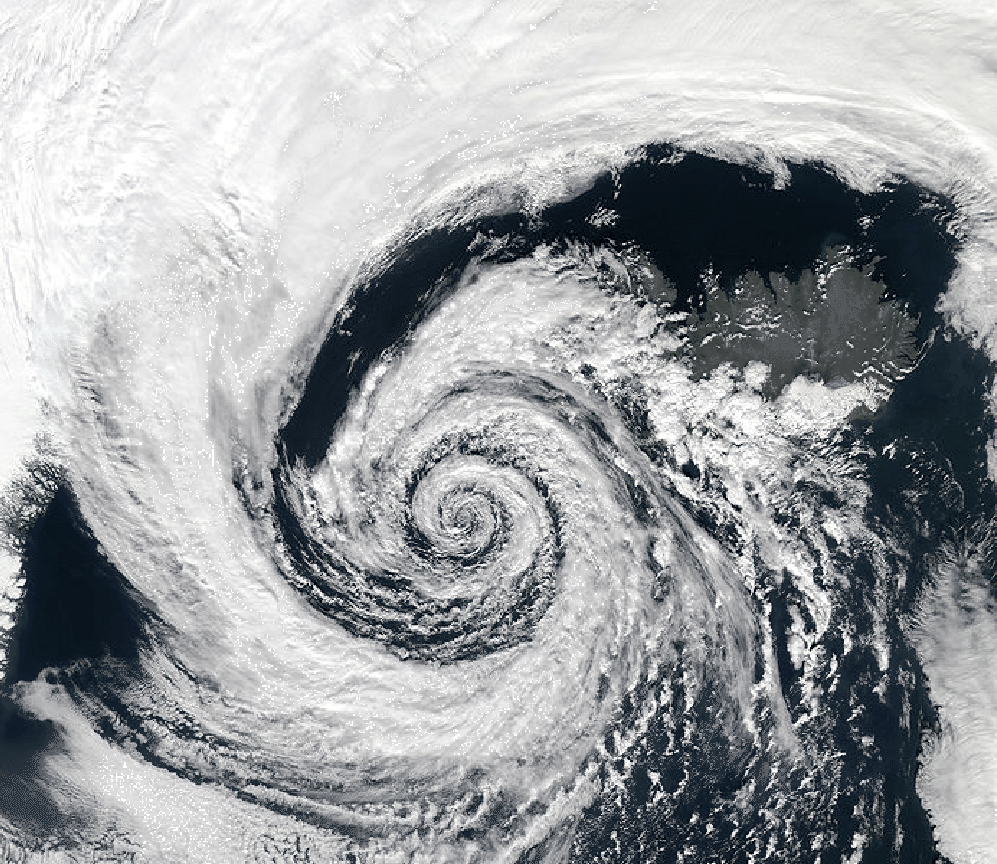Next: Example: The Foucault Pendulum Up: The Tides Previous: Example: Deflection of Cannon Contents
Without the Coriolis force, the weather on earth would be completely different from the weather we know. When a low pressure system is formed, air would rapidly flow from high pressure regions to the low pressure region if the earth did not rotate. In fact pressure waves travel at the speed of sound so pressure differences would be damped out in hours at the most. With the Coriolis force, the air will be deflected to the right in the northern hemisphere as shown in the figure below.


High pressure systems, like ones causing Santa Ana conditions in San Diego have air swirling clockwise in the northern hemisphere.
Tornados are a different phenomonon due to turbulence and remanent angular momentum.
Jim Branson 2012-10-21